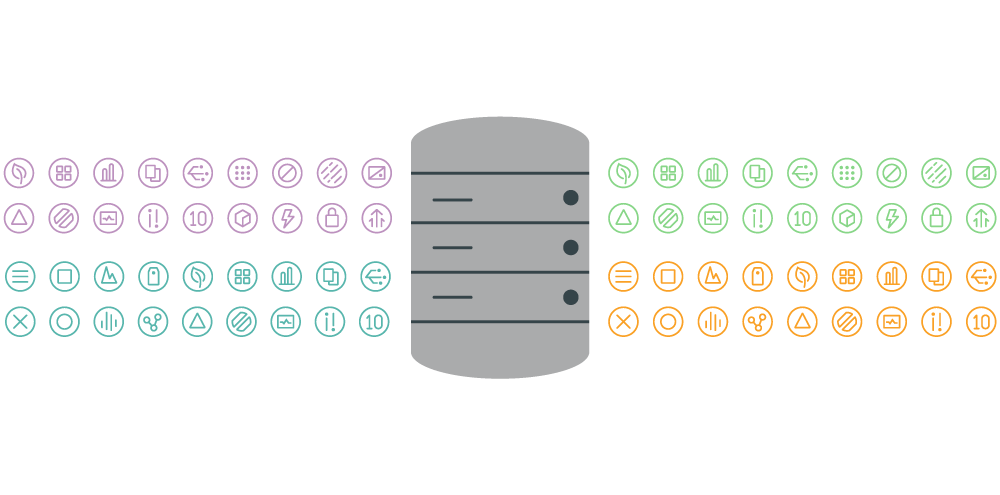12 Powerful Ways to Use PLCs with SQL Databases - Part 2

The Ignition SQL Bridge Module goes above and beyond as a tool for connecting SQL databases to Programmable Logic Controllers (PLCs). With SQL Bridge’s multi-functional capabilities, Ignition community members have implemented sophisticated solutions for their industrial control systems for far less money and time than they would've had to spend otherwise.
In part one of this series, we discussed Co-Director of Sales Engineering Travis Cox’s first six applications of SQL Bridge, which he presented in the webinar “12 Ways to Use PLCs and SQL Databases Together,” which included barcode scanning, scheduling, and other connective operations. In this second post, we’ll explore six additional uses of SQL Bridge, from recipe management, to OEE, to handshaking, and more.
7. Efficient Recipe Management
Sometimes, operators or control-system engineers might store a recipe directly in a PLC, usually for convenience or because they think they don’t have another option for recipe storage. Unfortunately, this can result in a poorly functioning controller, since PLCs run best when they are holding as little data as possible. Databases, on the other hand, have unlimited storage, making them ideal for storing recipes. PLCs themselves can trigger a recipe communication from the database, or a new recipe could be triggered by an operator or on a timed schedule. See a full demo of SQL Bridge’s recipe management capabilities.
8. Simple OEE Implementation & OEE Downtime
Sepasoft offers a module specifically for robust OEE functions in Ignition, but if you’re looking for a quick way to get simple OEE information, SQL Bridge can also support these queries. SQL databases store events recorded by PLCs and keep a log of downtime records; a simple analysis on that data will provide you with your OEE downtime information. For OEE, the counters in a PLC can calculate OEE value efficiently on a timed basis, whenever values change, or whenever the information is desired, and that record can be added to the database.

Since SQL Bridge has OEE capabilities but is not built specifically for OEE, the captured data will need to be plugged into a table. By setting up OEE tables with SQL Bridge, you can receive notifications on downtime and uptimes along with contextual data, like who the operator was or which machine went down. When logged with contextual data, this information set becomes much more valuable to system operators and the company.
9. Production Tracking
SQL Bridge allows operators to know which products have moved through which machines on the plant floor. After inputting all necessary information into the SQL database, and with knowledge of SQL queries, you can implement a variety of systems for production tracking. This process can log data for monitor sequencing, OEE, and other KPIs. Additionally, an operator can collect data for traceability, such as the amount of product being manufactured, associated work orders, and lot numbers. Furthermore, the production-tracking capacity of SQL Bridge allows the database to inform the PLC when a system has crashed. Even with a database failure, data is still cached and stored to be inputted later.
10. Handshaking with PLCs

One of the main abilities of the SQL Bridge Module is that it enables handshaking with PLCs, thereby allowing PLCs to synchronize with a SCADA system. Ignition performs a handshake to tell a PLC that an operation has been completed. Whether there has been a success or failure within the operation, it’s easy to search for the event and send a handshake up to the database or down to the PLC. This capability also allows Ignition to notify the local PLC whether a process has been completed and whether it was a success or failure. Since handshaking is built in, it’s a perfect way to keep SCADA and PLCs connected for communication and system monitoring.
11. Putting Real-Time Data & Control with Third-Party Applications
With SQL Bridge, it’s possible to use SQL databases to store real-time information. In the IT sector, many apps work with SQL systems, allowing SQL Bridge to convey additional information between apps, the database, and the PLC, without needing to connect the app directly to the PLC. This functionality is a lesser-known function of SQL Bridge, and offers operators and engineers many opportunities to utilize outside IT resources. For example, your SQL database can store real-time values in the database, so a third-party application can query those tags or values and find the data they need to perform optimally. Some useful applications of this connective tool include production-floor screens, HMIs, and webpage control capability.
12. ETL Tools

Extract, Transform, Load (ETL) tools are used for data warehousing in a typical database management system. During the process, an operator would extract data from different systems, parse it, put it into a database, and use it for different purposes. ETL tools allow you to run and schedule processes at a high level by collecting, parsing, and storing data in the database, then loading values down to the PLC. ETL can be run with a code, but a stored procedure can perform this function as well. The benefit of performing this function via SQL Bridge is that it requires less scripting, and it makes the logic simpler in Ignition.
Want a more in-depth look at SQL Bridge?
If you’d like more details on these SQL Bridge tips, watch this excerpt from our webinar, featuring Co-Director of Sales Engineering Travis Cox:
For more information on using SQL databases with SCADA systems, check out our white paper “Integrating SQL Databases and SCADA to Maximize Efficiency and Reliability” or the “SQL in Ignition” section in our User Manual.
